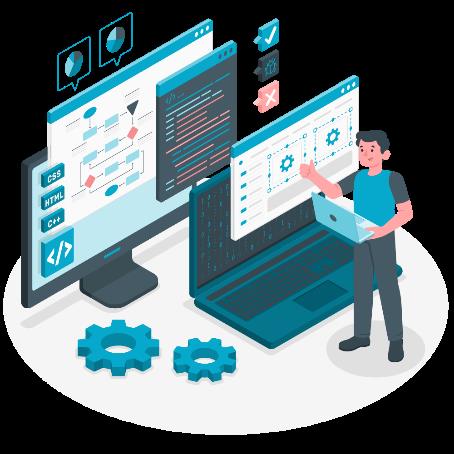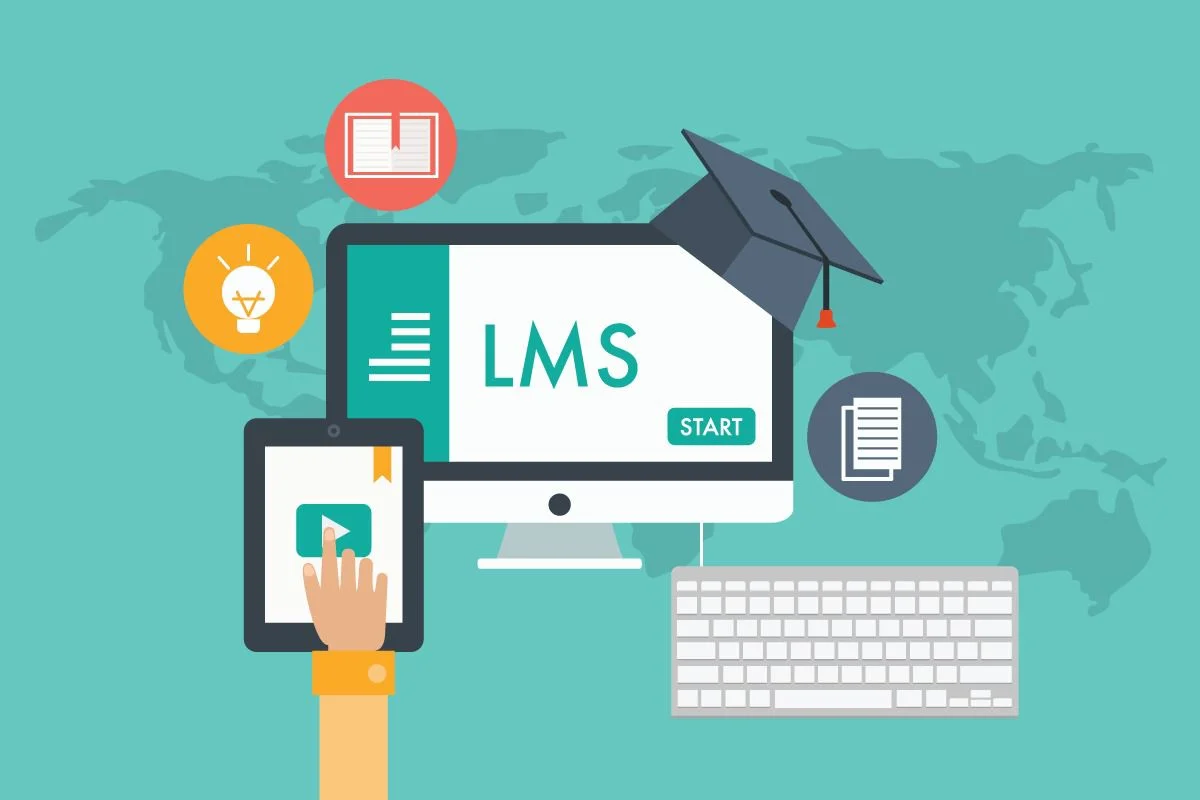Hello!
Launching a new Learning Management System (LMS) in the financial services industry requires careful planning and execution. With the right combination of features, services, and marketing strategies, organizations can ensure the successful adoption and utilization of their LMS.
In this blog, we will explore the best practices and essential tips for implementing an LMS in the financial services sector. Let’s get started.
Step 0: Do A Thorough Target Audience Analysis
By conducting a comprehensive target audience analysis, you can take actionable steps toward creating a marketing plan that resonates with your audience and drives optimal results.
 For financial services, the LMS target audience could consist of employees at all levels, spanning various departments such as:
For financial services, the LMS target audience could consist of employees at all levels, spanning various departments such as:
- Banking
- Insurance
- Investment
- Compliance
Step 1: Define Objectives That Drive LMS Success
When launching your Learning Management System (LMS) in the financial services industry, setting clear objectives is crucial for achieving desired outcomes.
Here are some actionable objectives that can guide your marketing plan:
- Increase LMS Adoption: Drive high adoption rates by promoting the benefits and value of your LMS to the financial services workforce.
- Enhance Employee Skills: Empower employees in the financial services sector with comprehensive skill development opportunities.
- Improve Training Efficiency: Streamline training processes and reduce costs by leveraging the automation and scalability features of your LMS.
- Foster a Culture of Learning: Cultivate a learning culture within financial services organizations by emphasizing the importance of ongoing professional development.
- Measure Learning Impact: Implement robust analytics and reporting capabilities to measure the effectiveness and impact of your LMS.
Step 2: Identify a Unique Selling Proposition (USP)
It is crucial to establish a compelling, Unique Selling Proposition (USP) to differentiate your Learning Management System (LMS) and capture the attention of financial services organizations.
 Here's how to highlight the unique value your LMS offers:
Here's how to highlight the unique value your LMS offers:
- Tailored for Financial Services: Emphasize how your LMS is specifically designed to address the unique needs of the financial services industry. Highlight features and content relevant to finance, compliance, regulations, etc.
- Comprehensive Feature Set: Showcase the comprehensive feature set of your LMS that sets it apart from competitors. Highlight functionalities such as customizable learning paths, robust assessment capabilities, interactive simulations, and integration with other systems commonly used in financial services.
- Seamless User Experience: Focus on providing a seamless and intuitive user experience for both administrators and learners. Highlight the ease of course creation, user-friendly interfaces, mobile compatibility, and personalized learning journeys that cater to individual learner needs.
- Advanced Reporting and Analytics: Highlight the powerful reporting and analytics capabilities of your LMS. Showcase how it enables financial services organizations to track learner progress, measure training effectiveness, and generate actionable insights for continuous improvement.
- Strong Security and Compliance: Emphasize the security measures and compliance features of your LMS to instil confidence in financial services organizations. Highlight data encryption, user access controls, audit trails, and adherence to industry regulations such as GDPR and PCI-DSS.
Step 3: Branding and Positioning Strategies for Your LMS in Financial Services
To successfully market your Learning Management System (LMS) to financial services organizations, it's essential to establish a strong brand and effective positioning.
 Here are key strategies to consider:
Here are key strategies to consider:
- Define a clear brand identity that reflects professionalism, expertise, and trustworthiness.
- Showcase your industry expertise and position your LMS as a financial service learning expert.
- Communicate the key benefits and value propositions of your LMS for financial services organizations.
- Highlight your LMS features and functionalities that set it apart from competitors.
- Craft targeted messages that address the specific needs and pain points of financial services professionals.
- Develop a visually appealing and consistent brand identity across all marketing materials and platforms.
- Establish your LMS as a thought leader through high-quality, industry-focused content.
- Utilize testimonials and success stories from satisfied financial services clients to build trust and credibility.
- Collaborate with influential individuals or organizations in the financial services industry to expand your reach.
- Continuously monitor and adapt your branding and positioning strategies based on market trends and customer feedback.
Step 4: Leverage Multiple Marketing Channels and Tactics
It's crucial to leverage the right channels and tactics.
Here are some marketing channels and tactics to promote your LMS in the financial services sector:
- Content Marketing: Create informative blog posts, articles, whitepapers, case studies, etc., highlighting the benefits of your LMS for financial services professionals.
- Social Media Marketing: Utilize platforms like LinkedIn, Twitter, and Facebook to share industry insights and success stories and engage with your target audience.
- Email Marketing: Build a targeted email list and send regular newsletters, product updates, and educational content to keep financial services professionals informed and engaged.
- Pay-Per-Click (PPC) Advertising: Run PPC campaigns that are targeted on search engines (and social media platforms) to drive traffic and generate leads.
Step 5: Define a Content Strategy
A well-crafted content strategy is essential for effectively marketing your Learning Management System (LMS) in the financial services sector.
 Here are key steps to consider when defining your content strategy:
Here are key steps to consider when defining your content strategy:
- Understand your target audience: Gain insights into the needs and preferences of financial services professionals to create relevant and engaging content.
- Establish thought leadership: Share industry insights, best practices, and case studies to position your brand as a trusted authority in the financial services sector.
- Utilize diverse content formats: Use a mix of blog posts, whitepapers, videos, webinars, and other formats to cater to different learning preferences.
- Track and analyze performance: Monitor key metrics such as engagement, conversions, and lead generation to assess the effectiveness of your content strategy.
- Optimize based on insights: Use data and feedback to continuously improve your content strategy and deliver content that resonates with your audience.
Step 6: Consider Influencer and Affiliate Partnerships
Influencer and affiliate partnerships can greatly enhance the visibility and reach of your LMS in the financial services sector. Collaborating with industry influencers and establishing affiliate partnerships can help you leverage their credibility, expertise, and existing audience to promote your LMS to a wider audience.
By strategically identifying and engaging with relevant influencers and affiliates, you can tap into their networks and benefit from their recommendations, endorsements, and promotional efforts.
Step 7: Metrics and Analytics
Measuring the success of your marketing efforts for your Learning Management System (LMS) is crucial for optimizing your strategies and achieving your goals. Implementing a robust metrics and analytics framework allows you to gather valuable data and insights.
Key performance indicators (KPIs) can provide valuable insights into the effectiveness of your marketing campaigns.
 These include the following:
These include the following:
- Website Traffic
- Conversion Rates
- User Engagement
- Lead Generation
Utilize analytics tools to analyze these metrics, enabling you to make data-driven decisions and identify areas for improvement. Regularly monitor and evaluate your metrics, adjusting your marketing approach accordingly to ensure continuous growth and success of your LMS.
Step 8: Budget and Timeline
When it comes to budgeting and establishing a timeline for marketing your Learning Management System (LMS), careful planning and allocation of resources are crucial.
- Start by determining your marketing budget based on your goals and desired reach.
- Consider expenses for advertising, content creation, website development, and any additional marketing initiatives.
- Next, create a detailed timeline that outlines key milestones, campaigns, and promotional activities.
- Take into account the launch date of your LMS, lead generation efforts, content distribution, and evaluation periods.
- Regularly track and adjust your budget and timeline as needed to ensure effective resource management and timely execution of your marketing plan.
Also read:
- QUASA KNOW-HOW: QUASA Makes NFT Active And Dynamic
- Global Map Reveals Average Penis Sizes, Results Are Surprising
- What Are NFTs And How Do They Affect The Entertainment Industry?
Conclusion
By considering all the above-mentioned aspects and implementing them effectively, you can create a powerful marketing plan that sets your LMS up for success in the financial services industry.
If you’re looking for a trusted partner to help you revolutionize your learning management system, look no further than Gyrus. At Gyrus, we understand the unique challenges faced by businesses in the modern landscape. Our LMS solutions are specifically designed to meet the needs of financial services organizations, providing you with the tools and features necessary to enhance employee training, improve compliance, and optimize learning outcomes.
Our team of experts will work with you to understand your requirements and tailor our services to align with your business objectives. Contact us today to learn more about our services and how we can help you succeed.
Thank you!






